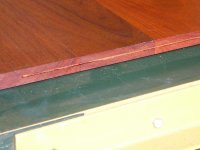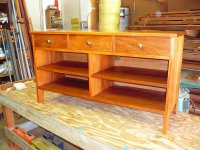Kodi Crescent
Member
- Joined
- Aug 6, 2010
- Messages
- 791
Hi,
I'm doing some shelf work in a bedroom. I've done some research on the internet to try to find a floating shelf design, and I get a variety of torsion box designs and such. I like the floating design, but not the thick boxy shape of much of what you find on the internet.
Has anyone created a floating shelf using 3/4 material, and created it so that it doesn't sag (Nose down over some time)?
The shelves I'm interested in are bedroom shelves where kids would place their little treasures. Maybe a radio and some stuff. Probably a 30lb weight limit.
Any ideas are appreciated.
Thanks!
I'm doing some shelf work in a bedroom. I've done some research on the internet to try to find a floating shelf design, and I get a variety of torsion box designs and such. I like the floating design, but not the thick boxy shape of much of what you find on the internet.
Has anyone created a floating shelf using 3/4 material, and created it so that it doesn't sag (Nose down over some time)?
The shelves I'm interested in are bedroom shelves where kids would place their little treasures. Maybe a radio and some stuff. Probably a 30lb weight limit.
Any ideas are appreciated.
Thanks!


